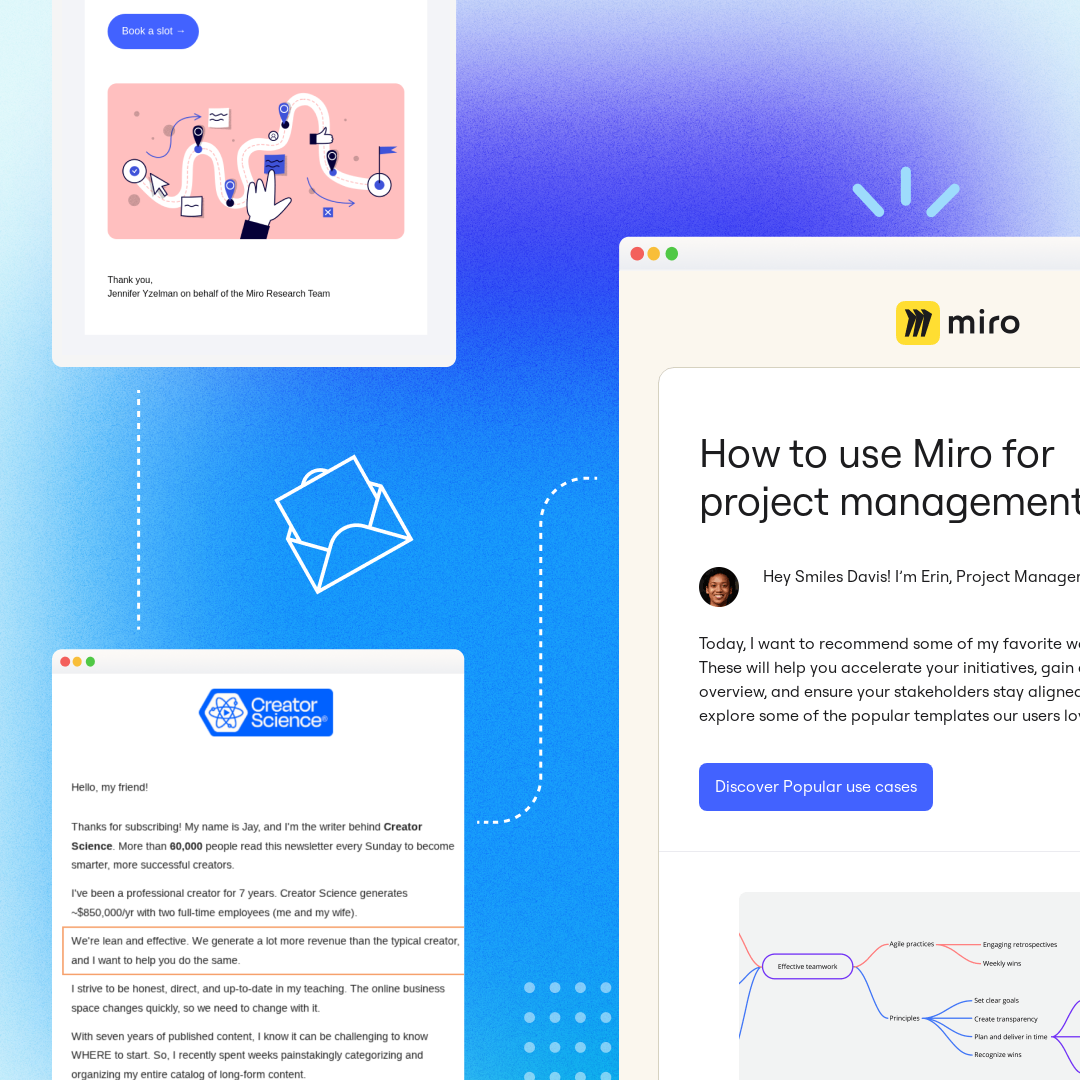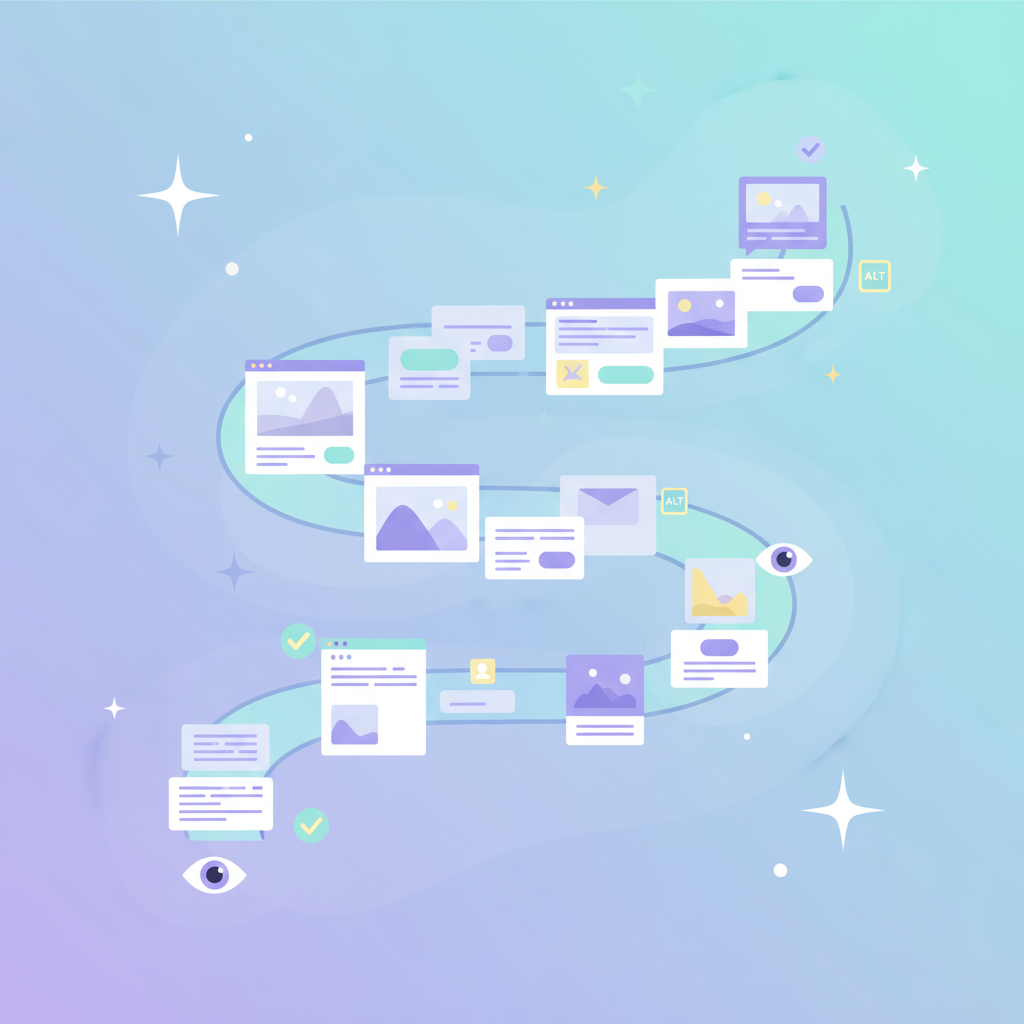
What is lifecycle email marketing?
Lifecycle email marketing is the act of segmenting your email subscribers based on where they are in the customer lifecycle.
The customer lifecycle is the set of stages your customers go through, from when they first hear about your brand to making a purchase and everything in between.
The stages of the customer lifecycle are typically known as:
- Awareness
- Consideration
- Conversion
- Retention
A survey conducted by Econsultancy found that 74% of marketers experienced an increase in their overall customer engagement rates when using targeted emails. While there are many ways of segmenting your audience, lifecycle email marketing stands out as one of the most effective strategies allowing businesses to send highly relevant content that moves readers to the next stage in the customer lifecycle ending in ideally, unbound brand loyalty.
Mapping out your lifecycle email marketing key stages
Lifecycle email marketing is all about customizing emails for each customer’s depending on their familiarity with your brand. Before you can jump in, you’ll need to map out your customer lifecycle stages. The stages are similar for most businesses but they can vary based on the type of product or service you offer or your industry.
The most common stages within lifecycle email marketing are:
- Awareness: In email marketing, this is when someone first signs up for your email newsletter.
- Consideration: This subscriber has become highly engaged in your welcome series emails and has a desire to learn more.
- Conversion: This is when the subscriber has completed the desired action.
- Retention: Once a customer has completed the desired action, it’s important to keep them engaged in your brand to encourage a repeat conversion.
- Advocacy or referral: In this stage, you want to encourage them to share their experience with the brand through word of mouth of leaving testimonials.
- Re-engagement: After a while, subscribers may experience email fatigue and stop engaging with your brand altogether.
As mentioned, these are some of the most common stages of lifecycle email marketing and this might look differently for you. We suggest diving into user behavior, patterns, and data to better understand your customer base and how they move through the lifecycle.
Getting started with lifecycle email marketing
As mentioned above, your lifecycle email marketing stages may differ depending on your business and industry. Here are some key considerations that will help shape what your cycle looks like.
Step 1: Understanding your customer lifecycle
We suggest diving deep into user behavior, patterns, and data to better understand your customer base and how they move through the lifecycle. Start by analyzing how your customers first discover your brand, what keeps them engaged, and the touchpoints that lead to conversion.
Look at the entire journey, from initial awareness to post-purchase behavior, and identify key stages where customers might drop off or need extra engagement.
By understanding these nuances, you can tailor your email campaigns to meet your customers' needs at each stage, ensuring a more personalized and effective approach.
Step 2: Audit your existing email karketing
Take a look at your recent email marketing and take stock of what stages you’re nurturing most and which ones may not be targeted as well. You might find that you’ve been sending plenty of emails for the conversion stage but not enough for retention, or maybe you haven’t sent any emails directly for the advocacy and referral stages.
Identifying gaps like these can show you where to be more focused and strategic in your email marketing moving forward.
Building out your lifecycle emails
Awareness
Customers in the awareness stage are just learning about and getting familiar with your brand. Your goal in this stage is to build a relationship with the customer, introduce them to your products or services, and tell them what you’re all about.
This is when customers decide whether your brand is a good fit for them (think of it as a first date between your brand and the customer), so it’s important that you make a positive and authentic first impression.
A welcome email to those signing up for your mailing list is an excellent opportunity to make a strong impression and build familiarity. It’s also a great time to send emails highlighting your brand story, mission statements, and other introductions to your brand.
Consideration
In the consideration stage, customers decide whether your business is the right fit for them and compare it to similar solutions. At this stage, you want to compellingly show them what you have to offer and how you stand out.
One way this manifests is through comprehensive emails on your products or services. This means highlighting key benefits, features, and use cases. This is also a great place to show vs. tell. Include animations, videos, and gifs that easily illustrate the value you bring.
Conversion
In this stage, a potential customer is on the verge of taking action. Emails in the conversion stage significantly influence that decision to buy.
Personalized special offers can resonate really well with recipients as they can be tailored to their specific needs and interests. This can look like offering deals on items they’ve recently viewed on your website or first-time purchase discounts.
Retention
This stage is where brand loyalty blossoms. Engaging customers beyond the initial conversion is crucial for retention and repeat purchases. During this stage, you can send service or product announcement emails to regularly communicate what’s new with your offer. A monthly or weekly newsletter is also a great way to keep your audience up to date on your brand’s activities and encourage them to explore other resources you may offer.
Regardless, the emails you send at this stage should be strengthening and affirming the customer’s connection with your brand.
Advocacy
When a customer has developed trust in your brand and offer, they start recommending your brand or organization to others. Referrals are the one most effective way B2B businesses acquire new customers, and according to Nielsen, people are four times more likely to buy a product if they’re referred by a friend.
When a customer is in the advocacy stage, you’ll want to send them review requests to encourage them to post testimonials, as well as educate them about any referral incentives you have.
Re-engagement
This is a period when your brand has fallen off their radar—they haven’t necessarily decided to stop following you, but they’re not actively interested in your services, products, or messaging. To continue to remain top of mind, we suggest doing regular re-engagement campaigns.
These types of emails could include special incentives like an exclusive discount, or simply “we’ve missed you” emails to show them what’s new. This is a good time to also reiterate the benefits of your offer as they pertain to their unique interest and preferences.
Best practices for lifecycle email marketing
Here are some best practices we recommend to ensuring that your lifecycle email marketing is optimized to build lasting relationships with your customers and drive ongoing engagement.
Segment your audience
The core of lifecycle email marketing is identifying what stage the individual is at any given time. Specifically for lifecycle email marketing, you'll want to segment your audience based on behaviours. This could include purchase history, website interactions, email engagement, or product usage. Patterns in these areas will help you best determine where to place an individual in the lifecycle stages.
Create personal and relevant content
Once you have an understanding of your users behaviours and patterns, use this to personalize your emails. Address recipients by their names, recommend products based on their past purchases, and tailor content to their preferences.
Ensure your emails provide value to your customers that helps move them to the next stage. Offer exclusive discounts, share useful tips, and provide relevant updates.
Timing and frequency
For lifecycle emails timing is crucial. Set up automated emails that are triggered by specific actions, such as welcome emails for new subscribers, cart abandonment reminders, and post-purchase follow-ups. These timely emails can significantly enhance engagement and conversions.
Monitor and measuring success
Along the way, make sure you’re tracking your metrics for each lifecycle stage to see how successful you are in moving folks through the customer lifecycle. Use these insights to refine your strategies and improve your overall strategy.
Testing
You can also conduct A/B tests to see how different email content, subject lines, and other details perform for people in specific lifecycle stages. For example, in your segment of customers who are in the consideration stage, run a test where half of them get an email every two days while the other half get an email every four days and see which group tends to engage more or convert more. This can tell you how frequently to send emails to this segment.
Just make sure you’re comparing apples to apples by comparing the two email versions for the same lifecycle segment, because customers in different lifecycle stages could have different reactions to the same email version.
Ensure brand consistency
Consistent branding helps recipients quickly recognize your emails, which builds trust and familiarity. According to a study conducted by Edelman, "81% of buyers need to trust a brand in order to buy from them," making trust and familiarity two crucial elements of efficient lifecycle email marketing.
Additionally, consistent branding helps differentiate your brand from competitors. This is crucial in the consideration stage to ensure you remain top of mind.
Designing emails for each stage of your lifecycle email marketing
The tips and strategies above can help you get started with lifecycle email marketing, but the success of your campaigns will also depend on how well you design and target your emails for specific stages and audiences.
That’s where Beefree can help. Our extensive email template library includes templates for many different types of emails that align with each lifecycle stage, and our easy HTML email editor lets you seamlessly customize them for your audiences.
You’ll be able to incorporate all the elements of your brand identity which helps you create brand recognition and build brand loyalty throughout every stage of the lifecycle. Interested in seeing how these templates can make your lifecycle email marketing simpler? Sign up for Beefree and start exploring.



